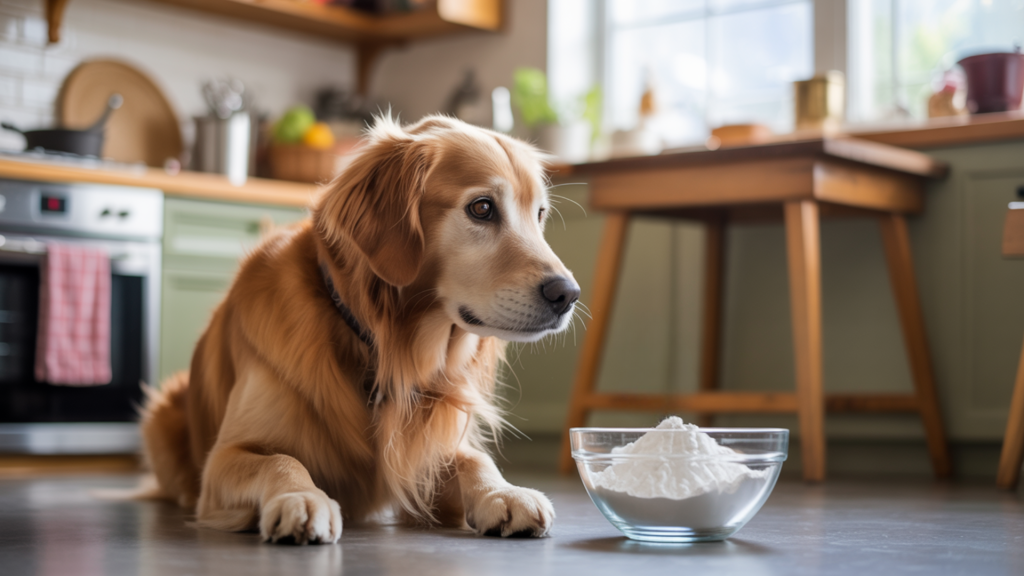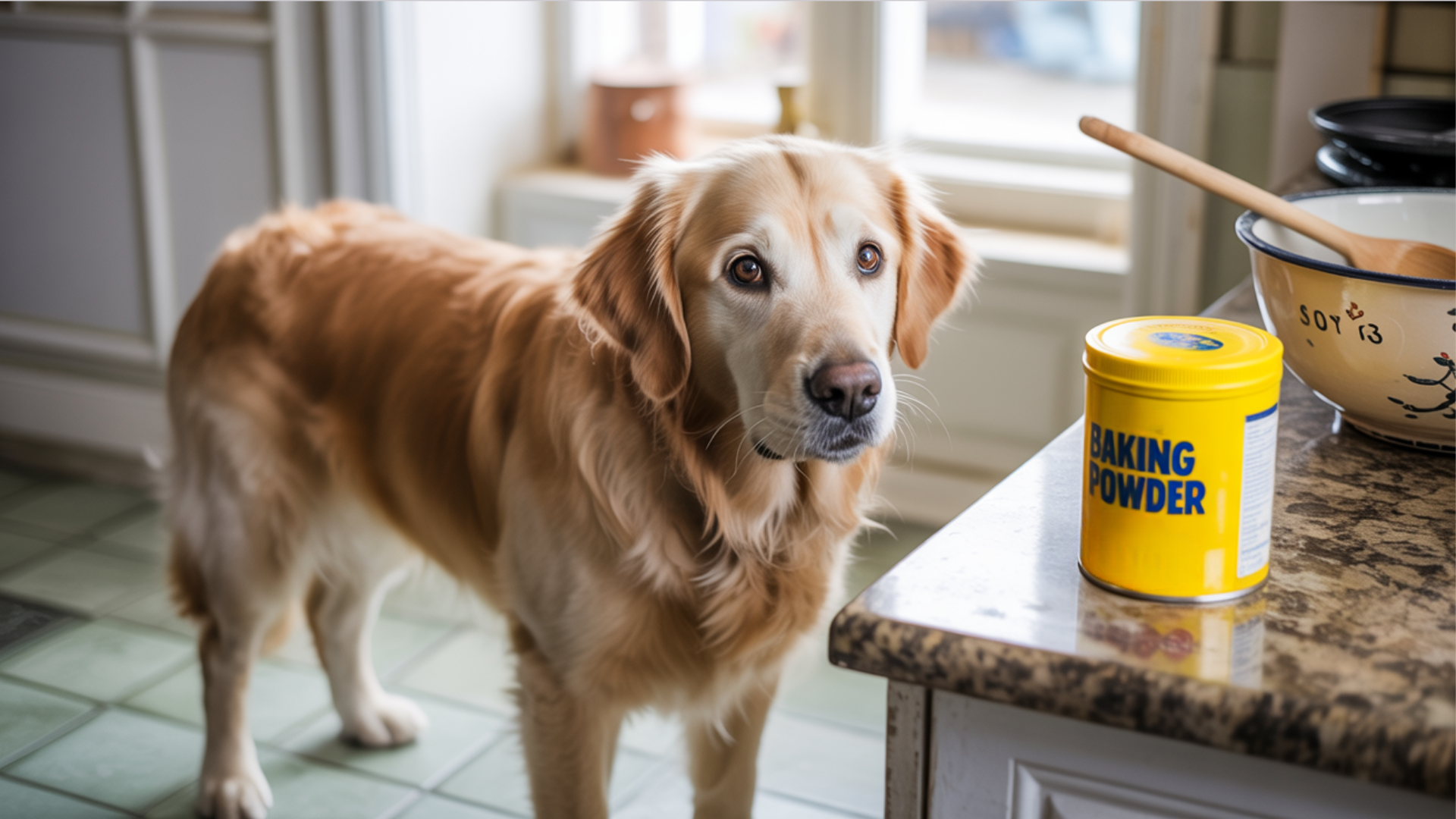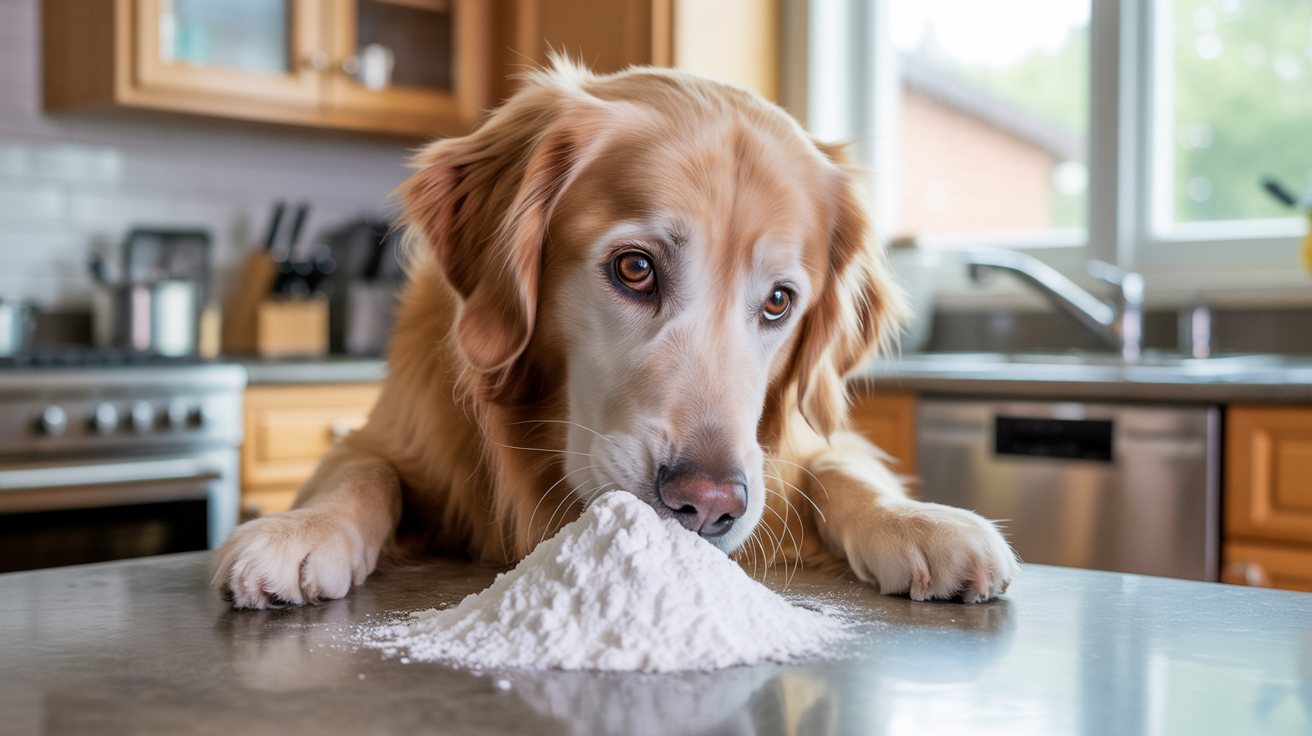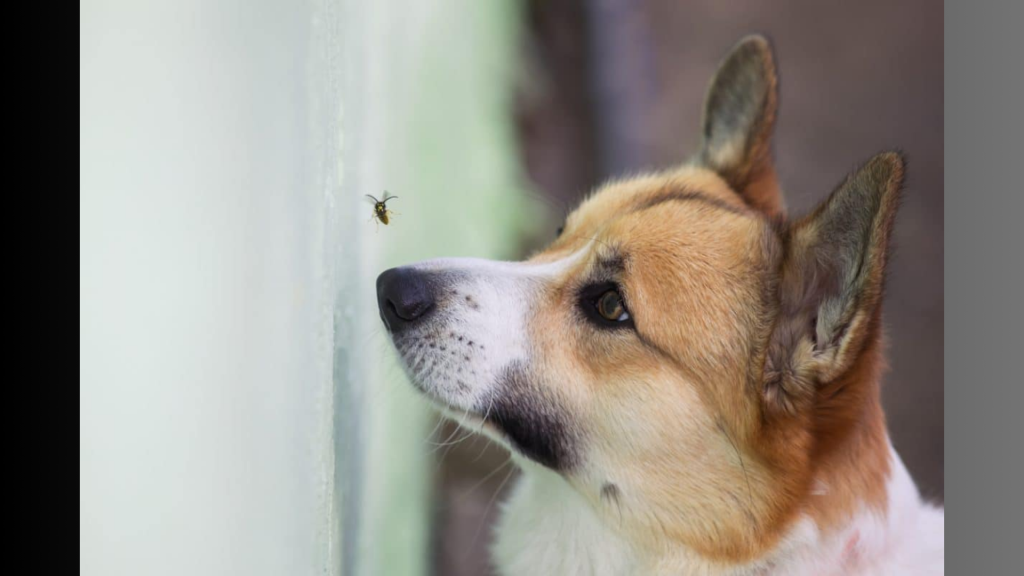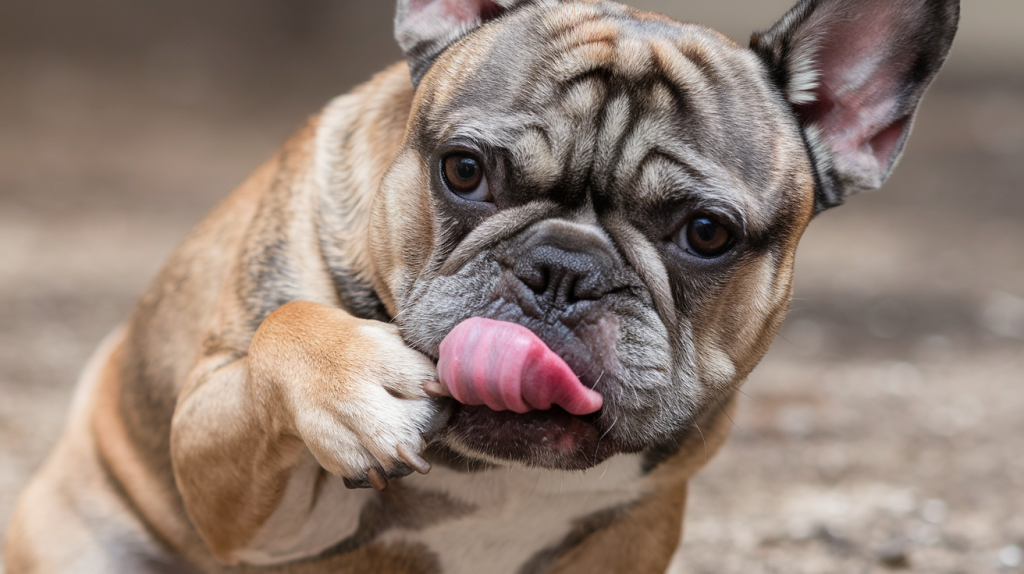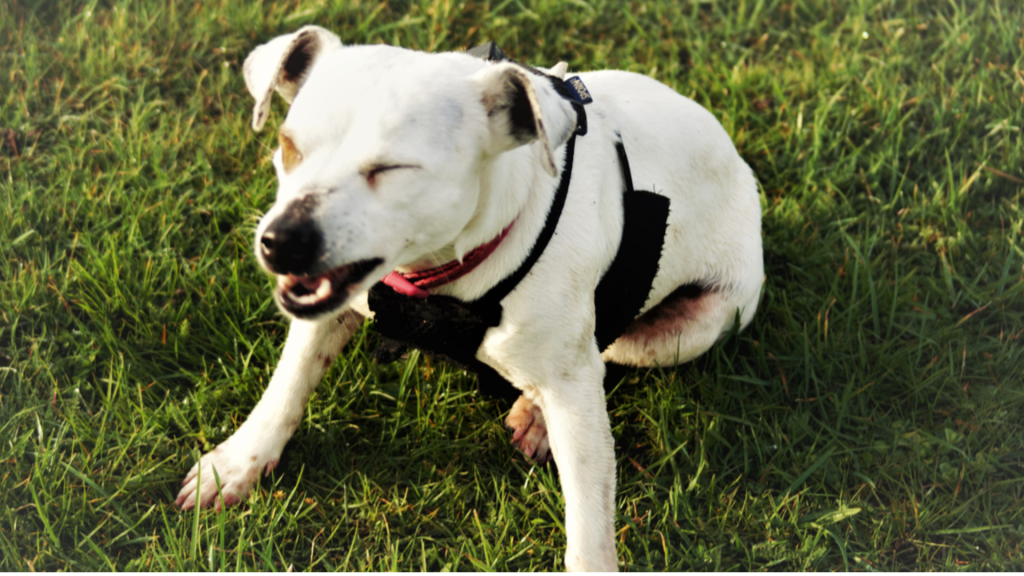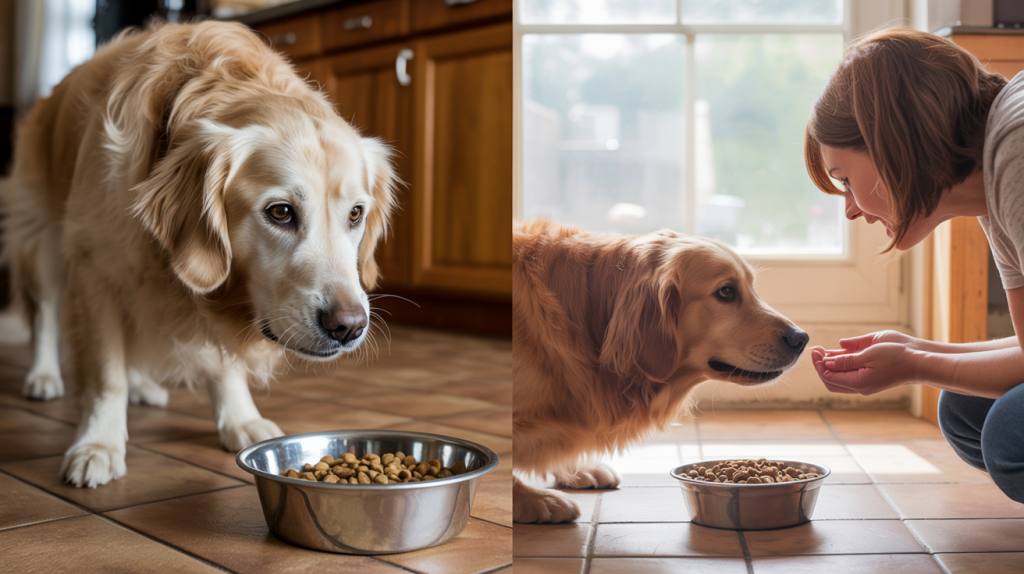Many pet owners face this dilemma when their curious pup gets into the kitchen pantry. It’s frustrating when you are unsure if a spilled ingredient poses a real threat.
And honestly, the mixed information online makes it even more confusing.
This blog covers everything dog parents need to know about baking powder risks, safe alternatives, and what to do in the event of an emergency.
What is Baking Powder?
Baking powder is a white, powdery substance that helps cakes and cookies rise. It’s made from baking soda mixed with other ingredients, such as cream of tartar.
When baking powder is mixed with liquid and heated, it creates bubbles that make baked goods fluffy.
Baking powder is extremely dangerous for dogs. It’s a leavening agent, which means it expands when mixed with liquid and heat.
When a dog eats baking powder, it starts expanding inside their stomach. This releases toxic gases into their digestive system.
The expansion process can lead to serious health issues. Dogs can’t handle the chemical reaction that happens inside their bodies. Even small amounts can cause them to become sick.
Unlike humans, dogs don’t have the same ability to process these ingredients safely. That’s why pet owners need to keep baking powder out of reach of curious paws and noses.
Risks and Symptoms of Baking Powder Toxicity in Dogs
Immediate Physical Symptoms
Dogs who eat baking powder often show symptoms within minutes. Vomiting typically occurs first, followed by diarrhea.
Pet owners might notice their dog becoming restless or disoriented. Muscle spasms and tremors can develop quickly, especially in smaller breeds.
Prevention tip: Store baking powder in sealed containers inside high cabinets where curious pups can’t reach.
Severe Health Complications
The expanding gases put tremendous pressure on a dog’s internal organs. This pressure can lead to congestive heart failure, which becomes life-threatening quickly.
Dogs may also develop severe electrolyte imbalances that can affect their heart rhythm and brain function.
Breathing Problems
Many dogs experience shortness of breath because the expanding gases compress their lungs. Some pets struggle to breathe normally and may pant excessively.
Neurological Effects
Seizures represent one of the most serious risks. Dogs might also show signs of depression, extreme lethargy, or complete disorientation.
These neurological symptoms indicate that the toxins are affecting their brain function.
Prevention tip: Train family members to clean up baking spills immediately and thoroughly.
Toxic Dosage Levels
Veterinarians consider roughly one teaspoon per pound of body weight dangerous. A 30-pound dog eating two tablespoons faces serious health risks. Smaller dogs need even less to experience toxic effects.
What To Do if Your Dog Eats Baking Powder?
Your dog ate baking powder? Here’s what to do right now.
Take Quick Action
Remove any leftover baking powder from your dog’s reach. Try to figure out how much your dog ate. Watch your dog closely for any symptoms. Call your vet if you’re worried about the amount.
What You Should Do Right Away
Step 1: Don’t Panic
I know it’s scary when your dog eats something they shouldn’t. But staying calm helps you make better choices.
Step 2: Figure Out How Much They Ate
Try to work out how much baking powder your dog ate. Look at the container. How much is missing? This helps your vet know how serious it is.
Step 3: Call Your Vet
Contact your vet right away, even if your dog seems fine. If your vet’s office is closed, call an emergency animal hospital or the Pet Poison Helpline at 855-764-7661.
Step 4: Give Fresh Water
Make sure your dog has access to plenty of fresh water. This helps their body deal with the extra sodium.
Step 5: Watch Your Dog Closely
Keep a close eye on your dog. Note any changes in how they act or feel.
What NOT to Do
Never make your dog throw up unless your vet tells you to. Only do this if a professional says it’s safe.
Don’t:
- Make your dog vomit on your own
- Give them milk or food
- Wait to see if they get better
- Try home remedies you read online
When to Call Your Vet
If your dog eats more than 1 teaspoon (small dogs under 20 lbs), 1 tablespoon (medium dogs 20-50 lbs), or 2 tablespoons (large dogs over 50 lbs) of baking powder, contact the vet immediately.
Also, seek help if your dog shows symptoms like vomiting, diarrhea, weakness, shaking, or difficulty breathing.
Home Care Instructions
If your vet says you can monitor at home, give your dog plenty of fresh water. Keep your dog calm and comfortable. Watch closely for any worsening symptoms.
Call your vet back if anything changes or gets worse.
Safety Tips for Dog Owners to Prevent Baking Powder Hazards
Taking simple precautions can prevent dangerous baking powder incidents in your home.
Here are essential safety measures every dog parent should follow:
- Secure High Storage: Store baking powder in upper cabinets or locked pantries, out of your dog’s reach.
- Use Sealed Containers: Replace cardboard boxes with airtight containers that dogs can’t tear open or knock over.
- Clean Spills Immediately: Wipe up any baking powder residue thoroughly and sweep floors after baking sessions.
- Install Cabinet Locks: Use childproof latches on lower cabinets containing baking supplies or cleaning products.
- Keep Baking Ingredients Separate from Pet Items: Store baking ingredients away from dog food, treats, and feeding areas to prevent mix-ups.
- Never Leave Open Containers: Close and store baking powder immediately after use, even during active cooking.
Safe Alternatives for Cleaning Around Dogs
Keeping your home clean is easy without using dangerous baking powder around your dog. Here are safe cleaning options that work well and won’t hurt your furry friend.
| Cleaning Method | How It Works |
|---|---|
| Pet-Safe Store Cleaners | Choose cleaners labeled “pet-safe” or “non-toxic” that clean effectively without harmful chemicals. |
| White Vinegar Solution | Mix equal parts water and white vinegar to safely remove odors and disinfect surfaces. |
| Castile Soap Mix | Add a few drops of plant-based soap to warm water for gentle cleaning of floors and toys. |
| Enzyme Cleaners | Break down pet accidents and organic stains completely while being safe for dogs. |
| Steam Cleaning | Use hot steam to kill germs without chemicals – a safe, natural option for immediate use. |
| Cornstarch | Absorb liquid spills and grease stains safely – harmless if ingested by dogs by accident. |
| Water and Microfiber Cloth | Clean most surfaces effectively with just water – no chemicals needed for basic cleaning. |
The Bottom Line
Keeping your dog safe from baking powder requires simple prevention steps and quick emergency response. Always store baking powder in secure, high cabinets, and clean spills immediately after cooking.
Can dogs have baking powder? Not under any circumstances. Even tiny quantities can cause serious health problems.
Watch for symptoms like vomiting, muscle spasms, and breathing difficulties if accidental ingestion occurs. Contact your veterinarian immediately rather than waiting for symptoms to worsen.

